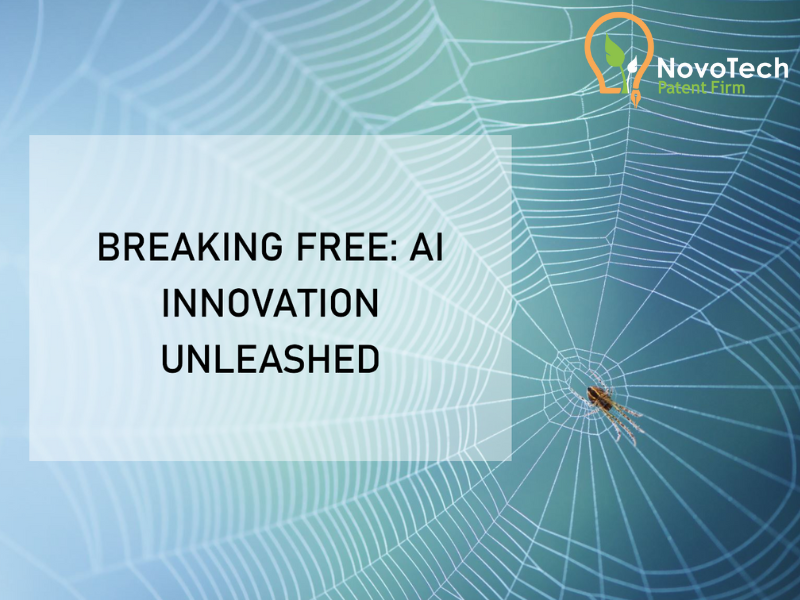
AI Innovation Trapped in Patent Purgatory
Authored by Babak Akhlaghi on February 14, 2025. The AI revolution is here, transforming industries at breakneck speed. But there’s a problem. Our patent system, the very foundation designed to protect and encourage innovation, is struggling to keep up. As someone who’s spent decades in the trenches of patent law, I’ve watched this crisis unfold firsthand.
Let me paint you a picture. Imagine you’re a brilliant AI researcher. You’ve developed an innovative artificial intelligence solution with the potential to transform medical diagnostic procedures. You’re excited, ready to change the world. But when you try to patent your innovation, you hit a wall. Welcome to the murky world of AI patent eligibility.
The Shifting Sands of Patent Eligibility
Here’s the crux of the issue: there’s no clear standard for what makes an AI innovation patentable. I’ve seen cases where one examiner approves a patent application, while another rejects an essentially similar application on a patent eligibility ground. It’s like trying to build a house on quicksand. Let me be clear: this is not the examiner’s fault either. It is the inherent uncertainty in the law and its application. The lack of clarity has resulted in such unpredictable outcomes.
Not long ago, we could overcome eligibility hurdles by clearly defining the inputs and outputs of an AI model. Now? Some examiners require specific improvements to the model itself. Others argue that the claimed limitations could be performed in a human mind, while counter-arguments supported by case law demonstrate that such implementation is not practical for human execution. This moving target leaves innovators guessing and second-guessing their patent strategies.
The impact? It’s huge, especially for startups. Every back-and-forth with the patent office costs money. Every rejection means more uncertainty. I’ve watched promising AI startups abandon potentially game-changing innovations because they couldn’t navigate this patent maze. We’re not just talking about lost profits here. We’re talking about lost progress.
The Human Element in a Digital World
Now, you might think that in this age of AI and remote work, face-to-face interactions are outdated. Let me tell you, nothing could be further from the truth. In my career, I’ve conducted hundreds of patent interviews. The most productive ones? Always in person.
There’s something irreplaceable about sitting across from an examiner, watching their reactions, adjusting your arguments in real-time. You can feel when your points are landing or falling flat. This human connection can make the difference between a granted patent and a rejection.
But here’s the problem: the USPTO’s shift to remote work has made these crucial in-person interactions rare. We’re losing that vital human element in our patent process, right when we need it most to navigate the complexities of AI innovation. While examiners remain exempt from the presidential return-to-work mandate (this is my understanding), I support workplace flexibility and remote options that still enable necessary in-person interactions. Perhaps the return of supervisory examiners to the office will help resolve this challenge.
A Glimmer of Hope on the Horizon
It’s not all doom and gloom. There’s a potential game-changer in the works: the Patent Eligibility Restoration Act (PERA) sponsored by Senator Senator Thom Tillis. This bill aims to provide clearer guidelines for what constitutes patentable subject matter. It could be the lighthouse we need in this fog of uncertainty.
PERA proposes to limit ineligible subject matter to specific categories like mathematical formulas not part of a useful process, or mental processes performed entirely in the human mind. This could be huge for AI patents. As long as your AI process is tied to a specific structure or processor, it would likely be considered patent-eligible. No more subjective arguments about what constitutes a “mental process.”
But legislation moves slowly, and AI waits for no one. So what can innovators do in the meantime?
Navigating the AI Patent Minefield
First and foremost, when drafting your patent application, focus on the technical “how” of your innovation. Avoid broad functional statements in your claims. Instead, drill down into the specifics of how your AI solves a technical problem. This approach gives you ammunition to overcome potential eligibility rejections.
Second, if you do face a rejection, don’t be afraid to interview with the examiner. Yes, phone interviews are the norm now, but push for video if possible. It’s not quite the same as in-person, but it’s a step closer to that crucial human connection.
Lastly, remember that the patent office is still figuring this out too. Keep an eye on the latest guidelines and court decisions. The landscape is constantly shifting, and staying informed is your best defense.
The Future of AI Innovation Hangs in the Balance
Make no mistake, the stakes here are enormous. The country that figures out how to effectively patent AI innovations will lead the next technological revolution. Right now, with our unclear standards, we’re at risk of falling behind.
We need a patent system that encourages AI innovation, not stifles it. We need clear, consistent guidelines that both innovators and examiners can rely on. And we need to remember the human element in this increasingly digital process.
The AI revolution is here. It’s time for our patent system to catch up. The future of innovation depends on it.
Stay Informed with Expert Insights!
Want more valuable tips on navigating patent law and protecting your intellectual property? Join our free weekly newsletter for the latest updates, expert advice, and exclusive content straight to your inbox. Subscribe today and never miss out on essential information that can make all the difference in your patent journey! Subscribe to our Newsletter